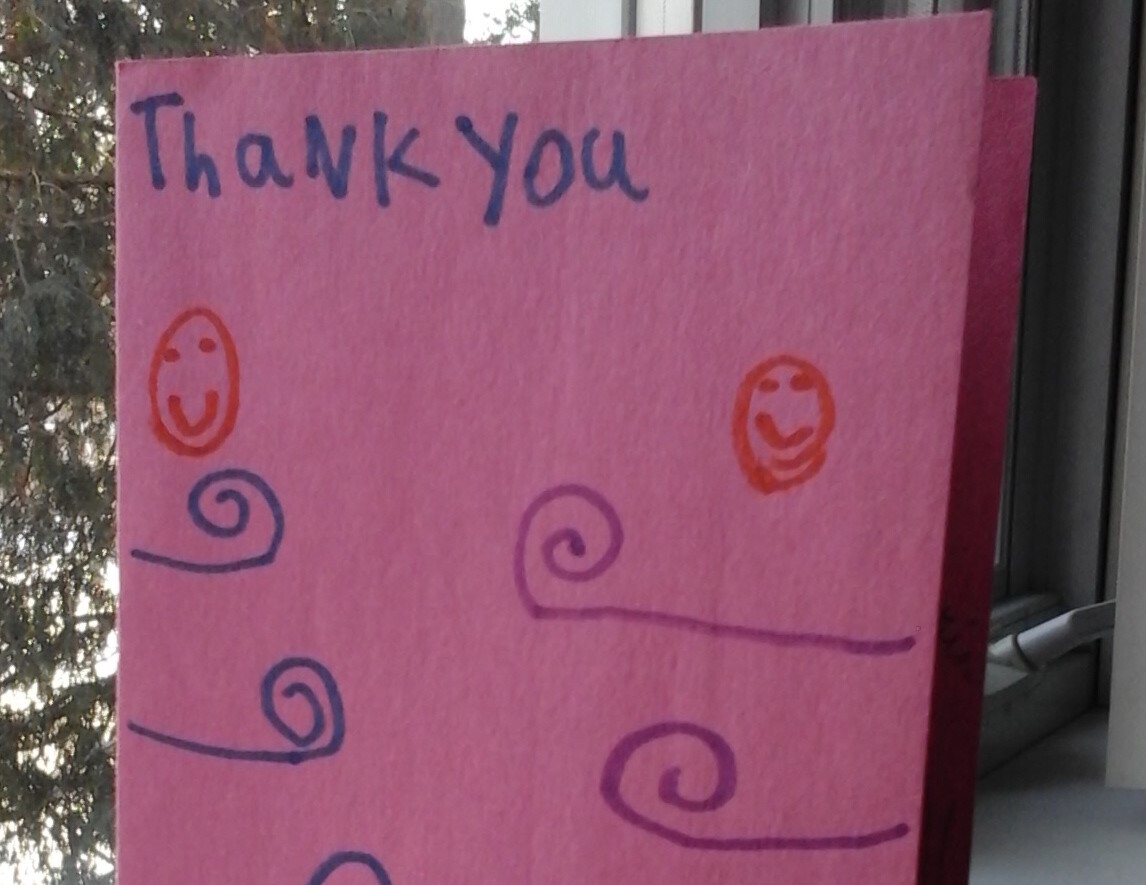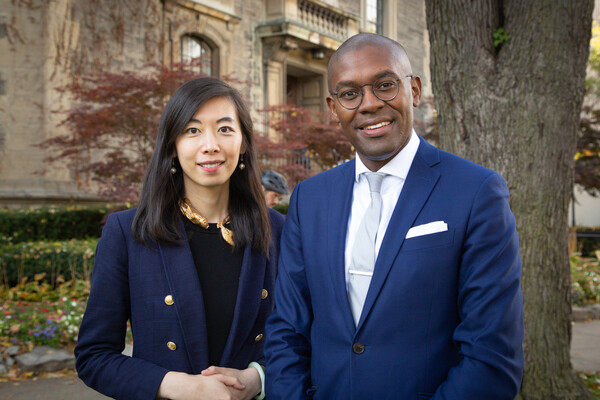Breadcrumbs
- Home
- MD/PhD Program
- News
- Foundations student experience blog: teaching the fundamentals of health…it’s elementary
Foundations student experience blog: teaching the fundamentals of health…it’s elementary

Alexandra Majerski, class of 2T0
 "What am I?" asks second grader, Sam, of his classmate, Anu. "That's not the kind of question you're supposed to ask, Sam," interjects my classmate, first year medical student Kramay. "Remember, you're supposed to ask your partner questions that will help you figure out the food on the sticker on your forehead. You can ask about what food group the food belongs to, its colour or texture." I hear giggling from behind. Marilyn and Jean have just found out they are both having spaghetti and meatballs for dinner tonight.
"What am I?" asks second grader, Sam, of his classmate, Anu. "That's not the kind of question you're supposed to ask, Sam," interjects my classmate, first year medical student Kramay. "Remember, you're supposed to ask your partner questions that will help you figure out the food on the sticker on your forehead. You can ask about what food group the food belongs to, its colour or texture." I hear giggling from behind. Marilyn and Jean have just found out they are both having spaghetti and meatballs for dinner tonight.
In less than a minute, Kramay and I learn that the guessing game we had planned was a little too sophisticated for the children in our grade 1/2 split class. Conversely, they got a kick out of the word search, connect-the-dot, and colouring sheets we had prepared for them. They had no problems colouring in cucumbers and carrots, but the dragon fruits and gooseberries did give them (and us!) a bit of trouble.
First year medical students at the University of Toronto had a chance to step back in time and remind themselves of their elementary school days, as part of the Community, Population, and Public Health (CPPH) component of the Foundations Curriculum. Pairs of medical students explored the physical and social environment of an elementary school in Toronto and Peel neighbourhoods. Within an assigned class, medical students had the opportunity to observe children as they learned, listened, communicated and worked independently. A health related activity was undertaken with each class; popular topics included physical activity, oral hygiene, bones of the body, or like Kramay and myself, healthy eating.
Kramay and I were quick to recognize the large assortment of diverse cultural backgrounds from which our students came. The heterogeneous array of people living in Toronto, the most multicultural city in Canada, is a testament to our high levels of adaptability, inclusivity and flexibility. However, in a school where 35 per cent of the students come from homes with annual incomes of over $100,000 and 35 per cent of the students come from homes with annual incomes of less than $30,000, the role that diversity plays in children's educational experiences is far more nuanced. Conversations with our classroom teacher revealed that there are profound differences in the reading, writing, and oral communication skills between students with the highest household income and the lowest, as well as those who speak English at home and those who do not. What appears to be the most important step in attending to these discrepancies is acknowledging that they exist. Addressing them requires employing innovative strategies that make the learning experience as equitable as possible.
Our school visit activity concluded with small group presentations and discussion with classmates. Many students framed their conversation by presenting data related to the demographics of the neighbourhood, such as recent immigrant populations, household annual income, percentage of children living in the area and languages spoken at home. Along with an analysis of these data, a reflection on the school experience itself, gave medical students the chance to discover the ways in which the social determinants of health impact the learning outcomes of children.
Previous posts
Foundations Curriculum student experience blog: a healthy take on nutrition
Foundations Curriculum student experience blog: an Enriching Educational Experience
Foundations Curriculum student experience blog: first impressions
News


